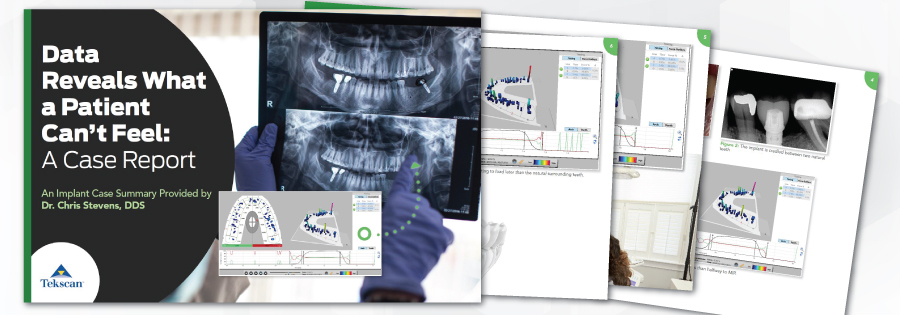 Dr. Chris Stevens, DDSThis case study was adapted from the following citation: Stevens, C. "Technology to Control Excesssive Occlusal Contact Force in Enhancing Implant Longevity" (January 2016) Dentistry Today, 112-117.
Dr. Chris Stevens, DDSThis case study was adapted from the following citation: Stevens, C. "Technology to Control Excesssive Occlusal Contact Force in Enhancing Implant Longevity" (January 2016) Dentistry Today, 112-117.
Patient Overview
A 54-year-old patient had an edentulous space at the #19 area where the first molar was extracted as an emergency about six months previously. He came to
the office with a desire for replacement.
- Had a bridge on the lower right side and did not like how food became impacted every time he ate.
- There was no convincing him implant replacement was a good option.
- Primary concern was the patient’s smoking habit. Smoking does not eliminate the implant option, but I always tell smokers they need to be aware that nicotine and bi-products of cigarettes have an adverse effect on the healing process. But, the patient chose the implant option.
The implant prosthesis replaced tooth #19, between two natural teeth.
Dr. Stevens used a 4.7 diameter, 10 mm length Legacy 3 (Implant Direct International, LLC) implant. After healing and crown cementation, he used T-Scan to capture the patient’s bite force dynamics, so he could check the occlusal load on that crown.
For More Ways to Use T-Scan in Implant Applications,
